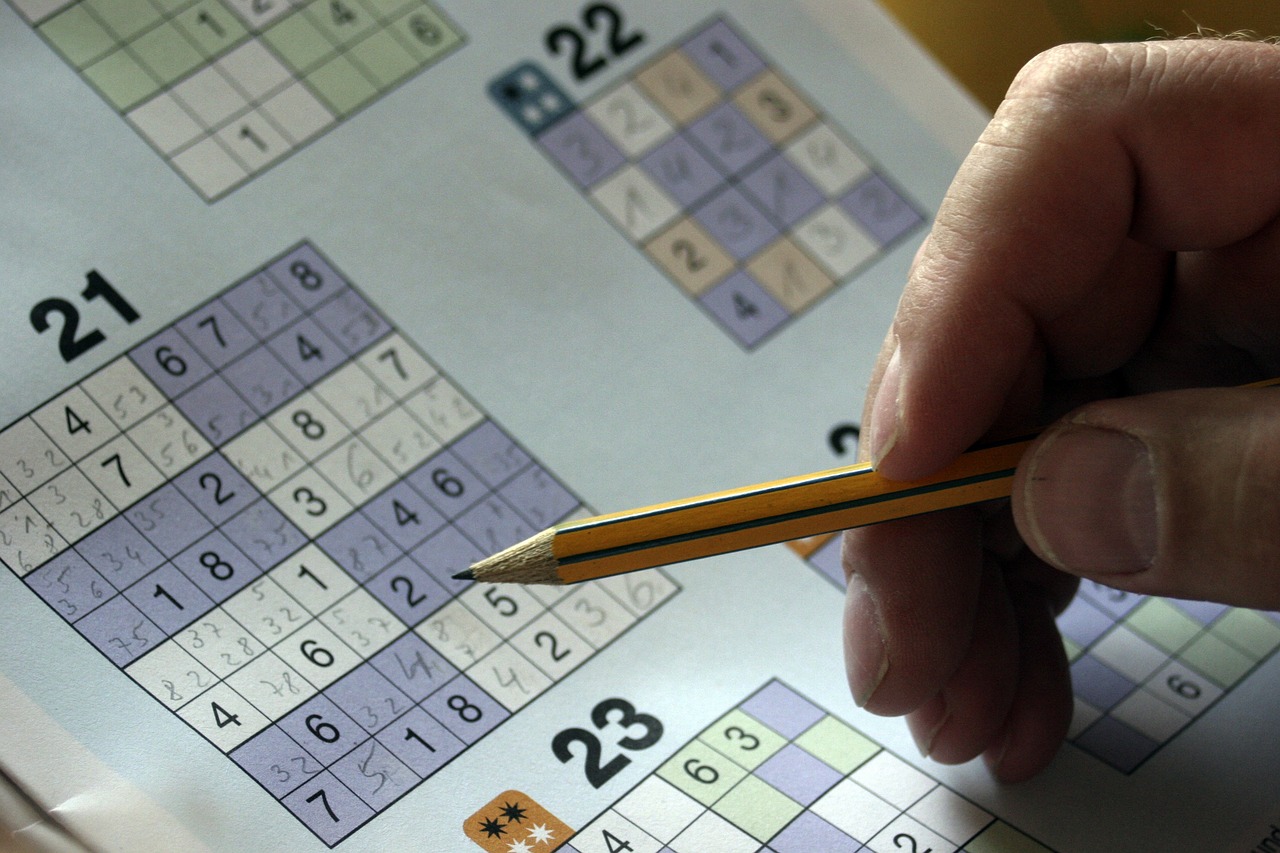
What is Sudoku game? A Sudoku is a numbers logic puzzle that has captivated millions of people of all ages and backgrounds around the globe. The word Sudoku is abbreviated from the Japanese suuji wa dokushin ni kagiru, which loosely translated means ‘the numbers (or digits) must remain single’. This translation will become clear as we dive into learning about the rules of the puzzle and how it is solved.
Understanding the Basics of Sudoku
A standard Sudoku puzzle consists of a 9×9 grid, divided into nine 3×3 subgrids. The 3×3 subgrids are often called boxes or blocks. The cells in the same row, column and block are sometimes called buddy cells. The objective is to fill each row, column, and block with the numbers 1 through 9, ensuring that no number repeats within any row, column, or block (i.e. no repeats in any buddy cells). Sounds simple, right? Well, as any Sudoku enthusiast will tell you, appearances can be deceiving.
The 9×9 grid comes pre-filled with select numbers at various locations to get the puzzler started. The difficulty level is established by a combination of how many pre-filled numbers are initially provided and where they are located in the grid.
For true beginners, it is best to start with puzzles labeled ‘Easy’ or ‘Beginner’. The last thing you want to do is start with a Sudoku puzzle that is too challenging for your skill level, get frustrated and abandon the idea of getting to learn and enjoy this pastime. Here is an example of an easy puzzle:

As you can see there are 37 of the 81 individual cells that are pre-filled. Also, there are two 3×3 blocks with 7 of the 9 cells pre-filled. Starting with a Sudoku puzzle like this makes it fall into the ‘easy’ category.
See the end of this article for the solution to that puzzle. Spoiler alert — Don’t peak yet until you have tried to solve it, unless you get stuck.
Fundamental Strategies for Beginner Sudoku Solvers
For beginners, tackling a Sudoku puzzle can feel overwhelming. Where do you even begin? Fear not, as there are several tried-and-true methods to get you started on the right foot.
An important point to remember is that the puzzle only has one solution. Therefore, guessing the content of a cell, even though you think the number should fit that cell is not a good strategy. You will instead be using ‘what if’ scenarios, identifying possible solutions to a cell and eliminating other numbers as you progress in solving the puzzle.
Always use a pencil with a good eraser. You will need this for entering possible solutions in each cell, but also to remove annotations as you eliminate those that won’t fit. Using a pen or marker is a recipe for disappointment.
First, take a moment to scan the puzzle and identify any obvious placements. Look for rows, columns, or blocks with the fewest empty cells. These are prime candidates for quick fills.
Try to find hidden singles. Those are cells in a 3×3 block that can only have one solution because the associated buddy rows and columns can be used to eliminate other possibilities. In the above example, notice that Row 7 is only missing the numbers 5 and 9. But with a little bit of deduction, Row 7, Column 2 (abbreviated R7, C2) cell only has a possible solution of the number 9 since both column 2 and box 7 already contain the number 5.
Develop a potential candidate list and annotate the possibilities in each block. I recommend using light pencil marks that will be easy to erase once you have found the actual solution to that given cell. Another option is to make a list on a separate sheet of paper using shorthand such as R1C1 (Row 1, Column 1). Maybe try both methods in the beginning of your Sudoku journey to find the one that you like best. It’s best to start with an empty cell in a row, column or block that has the most numbers already pre-filled and leaves you with limited solutions to the given cell.
Next is finding hidden pairs. The hidden pairs technique works similar to hidden singles. The difference is the number of cells and annotations. If you can find two cells within a row, column, or 3×3 block where two annotations appear nowhere outside these cells, these two annotations must be placed in the two cells. All other annotations can be eliminated from these two cells. An example would be where the only two cells remaining within a given block can each only contain two numbers. For this example, let’s say that 3×3 block nine has two remaining empty cells and based on elimination of possibilities, each of these two cells can only contain the numbers 2 or 3. Therefore, one of the cells must contain the number 2 and the other must contain the number 3. This allows you to eliminate any other numbers that were previously annotated in these cells.
Let’s move on to hidden triplets. Hidden triples refer to three cells in a row, column, or block that contain the same three annotations. These three cells also contain other candidates, which may be removed from them. For example, you are solving a puzzle with only three cells which contain repeated numbers: 6, 7 and 9. This means each of these numbers must occupy one of these cells. And any other numbers cannot be found here. If so, 6,7 and 9 cannot be present in any other cell of this block as well.
Now let’s find pointing pairs. Pointing pairs exist when you have an annotation that appears twice in a block and this annotation also belongs to the same row or column. Therefore, the annotation must be the solution for one of the two cells in the block and you can eliminate this annotation from any other cells in the row or column.
Finally, we review pointing triplets. Pointing triplets is similar to pointing pairs. It occurs when an annotation exists in only three cells of a block and also belongs to the same row or column. Therefore, the annotation must be a solution for one of these three cells in the block and allows you to eliminate the solution from any other cell in the row or column.
Advancing Your Sudoku Skills
Some advanced strategies for solving more difficult Sudoku puzzles include X-wing, Y-wing and Swordfish. Since this article is for beginners, we won’t get into the specific about these strategies. As your skill level progresses, look for future articles on this website that will provide details to improve your ability to solve more difficult Sudoku puzzles.
Recommended Reads and Resources for Improving Your Skills
For beginners looking to hone their Sudoku skills, there are plenty of resources available to guide you on your journey:
- “Sudoku for Dummies” by Andrew Heron and Edmund James: This guide offers step-by-step instructions for a beginner on the basics of Sudoku, making it perfect for newcomers to the world of number puzzles.
- “Easy Sudoku” by Kyle Craig: This book is perfect for those who are new to sudoku and want to start with something easy. It offers a collection of puzzles suitable for beginners, allowing you to practice and improve your solving techniques.
- Websites like Sudoku.com offer both strategies and printable puzzles.
Final Thoughts
Sudoku is more than just a game—it’s a mental workout that challenges logic, reasoning, and problem-solving skills. We welcome all beginners taking your first steps into the world of Sudoku. With practice and continued learning, you have the ability to hone your skills and progress to more challenging Sudoku puzzles. So, grab a pencil, sharpen your mind, and prepare to crack the Sudoku code like a true puzzle-solving ninja!
Solution to earlier puzzle:

Follow us on Facebook for more articles, tips, tricks and giveaways!
Related Articles:
PuzzleSolverPro is reader-supported. When you buy via links on our site, we may earn an affiliate commission at no extra cost to you. It’s a simple way you can support our mission to bring you quality content.


